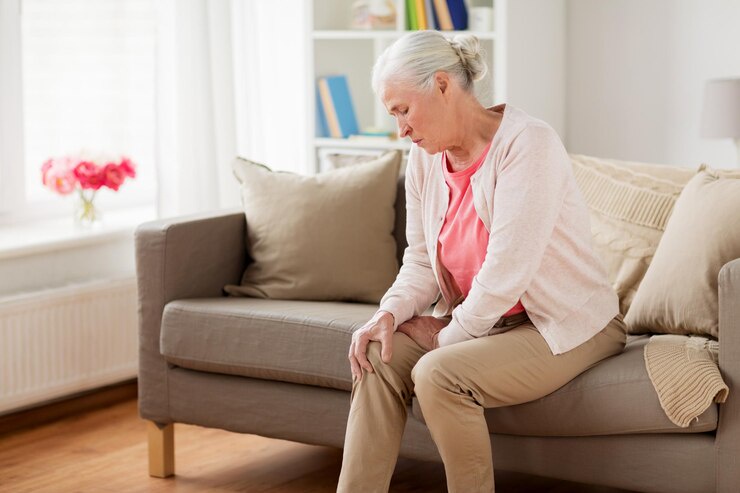Sciatica, a widespread ailment affecting individuals of all ages, poses unique challenges for elderly women. As women age, they encounter diverse health issues, and sciatica emerges as a substantial disruptor to their daily lives. This article delves into the nature of sciatica, and its prevalence among elderly women, and provides valuable insights into managing and mitigating its symptoms through practical tips and lifestyle adjustments. Understanding the dynamics of sciatica in the context of aging is crucial for fostering a proactive and holistic approach to well-being in this demographic.
What is Sciatica?
Sciatica refers to pain that radiates along the path of the sciatic nerve, which branches from your lower back through your hips and buttocks and down each leg. It typically affects one side of the body and can range from a mild ache to sharp, excruciating pain. Sciatica is often caused by compression or irritation of the sciatic nerve, commonly due to a herniated disc, bone spur, or spinal stenosis.
Why Does Sciatica Affect Elderly Women?
Several factors contribute to the increased likelihood of sciatica in elderly women:
Degenerative Changes: As women age, the spine undergoes natural degenerative changes. Discs between the vertebrae may lose water content and elasticity, making them more prone to herniation and putting pressure on the sciatic nerve.
Hormonal Changes: The hormonal shifts during post-menopause impact bone density and muscle mass, increasing vulnerability to conditions like osteoporosis and arthritis. These ailments, in turn, heighten the risk of sciatic nerve compression, emphasizing the intricate connection between hormonal changes and the development of sciatica in postmenopausal women.
Lifestyle Factors: In the elderly, a sedentary lifestyle, improper posture, and obesity are widespread issues. These factors significantly contribute to the onset or worsening of sciatica. Emphasizing the importance of physical activity, maintaining good posture, and achieving a healthy weight becomes paramount in mitigating the impact of sciatica, and enhancing overall well-being among the elderly population.
Managing Sciatica in Elderly Women:
Exercise and Physical Activity:
Incorporating regular, low-impact exercises, such as walking, swimming, or practicing tai chi, plays a vital role in preserving flexibility and fortifying the muscles that support the spine. Additionally, embracing gentle stretching exercises proves effective in easing sciatic nerve pain, offering a proactive and holistic approach to managing this discomfort for individuals seeking relief from sciatica. Home care Danville staff are experts in assisting age-appropriately workouts.
Maintain a Healthy Weight:
Excessive weight contributes to the aggravation of sciatica symptoms, as it intensifies pressure on the spine. A key strategy for alleviating this pressure involves maintaining a healthy weight through a well-balanced diet and regular exercise. This approach diminishes strain on the sciatic nerve, fostering improved overall spinal health and minimizing discomfort.
Proper Posture:
Promoting good posture proves instrumental in relieving pressure on the lower back and sciatic nerve. Practice sitting and standing with a straight back, relaxed shoulders, and feet flat on the floor. To prevent strain, it's essential to avoid extended periods of sitting or standing, incorporating regular breaks and adjustments into daily activities for optimal spinal health.
Hot and Cold Therapy:
Ease sciatic nerve discomfort by applying heat or cold packs to the affected area. Heat relaxes tight muscles, while cold therapy reduces inflammation. Alternating between these two methods optimizes their complementary effects, offering a practical and accessible approach to managing sciatica symptoms and promoting comfort.
Medication:
Over-the-counter pain relievers, such as acetaminophen or nonsteroidal anti-inflammatory drugs (NSAIDs), can help manage pain and inflammation. In some cases, your healthcare provider may prescribe muscle relaxants or nerve pain medications.
Physical Therapy:
Working with a physical therapist can be beneficial in developing a customized exercise program, improving posture, and learning proper body mechanics to prevent further sciatica episodes.
Alternative Therapies:
Some individuals find relief through alternative therapies such as acupuncture or chiropractic care. Consult with your healthcare provider before exploring these options to ensure they are safe for your specific condition.
Conclusion:
Sciatica in elderly women can be a challenging condition, but with a proactive approach to lifestyle choices and proper management, its impact can be significantly reduced. By incorporating exercise, maintaining a healthy weight, practicing good posture, and considering various treatment options, elderly women can enhance their quality of life and minimize the impact of sciatica on their daily activities. As always, it's essential to consult with healthcare professionals from Danville Home care for personalized advice and guidance tailored to individual needs.


No comments yet